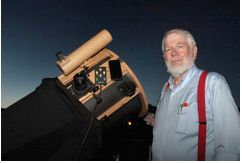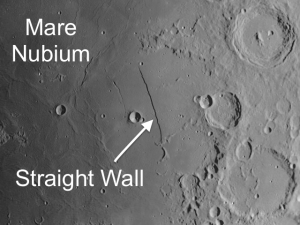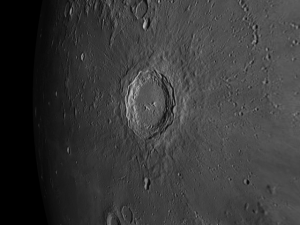The Moon gets a bad rap. Although it is a thing of astonishing beauty and complexity, it is often looked upon by astronomers as a benevolent nuisance.
 It’s great for poets and lovers, but it interferes with the viewing of faint fuzzy things that are millions of light years away. Because the feeble light from these objects is washed out by the Moon’s glare, astronomers will frequently not even bother to take out their telescopes when there is a Moon in the sky. In doing so, they deprive themselves of one of the richest and most fascinating views in the entire heavens.
It’s great for poets and lovers, but it interferes with the viewing of faint fuzzy things that are millions of light years away. Because the feeble light from these objects is washed out by the Moon’s glare, astronomers will frequently not even bother to take out their telescopes when there is a Moon in the sky. In doing so, they deprive themselves of one of the richest and most fascinating views in the entire heavens.
There is a two-fold purpose to this blog (which will appear weekly):
1) To explain the most interesting objects that are visible on the Moon around the time of the blog posting.
2) To encourage astronomers to look upon the Moon as a friend instead of an adversary. There will be items of interest for astronomers of all levels – beginner through advanced.
A great tool for getting familiar with the Moon is Sky and Telescope’s Field Map of the Moon. It is the very finest lunar map available for use at the telescope and is available from skyandtelescope.com or Amazon. Lunar features that are described in this blog are keyed to Sky and Tel’s map, and entries will look like this – Plato: [NW/D9] (meaning the crater Plato can be found in the NW quadrant, grid location D9).
During the week of Feb. 1st, lunar observers will have to be early risers. The Moon will be 22 days old on Monday and will not rise until about 1:00 AM. The sunset terminator will be at approximately 7° W longitude. Check the longitude markings on the Field Map. Any objects that are within 10° or so of the terminator will have astonishing detail!
Two Interesting Objects Visible on the Moon the week of February 1st
Here are two interesting objects to see on the moon this week:
First Interesting Object Visible on the Moon the week of February 1st

Straight Wall: [SW/M9] Visible only on the morning of Feb. 1st, Straight Wall (a.k.a. Rupes Recta) is the showpiece lunar fault line and can be seen clearly in the smallest telescopes. It is 68 miles long and between 800 and 1,000 feet high. You will see clear evidence that Straight Wall is an enormous fault line where the terrain to its west has fallen away. At lunar sunset on Day 22, the exposed slope of the fault is brightly illuminated.
Second Interesting Object Visible on the Moon the week of February 1st

Copernicus: [NW/J7] Magnificent Copernicus has been justifiably dubbed “The Monarch of the Moon.” The crater was blasted out 800 million years ago in an explosion that was so powerful that some of the ejected debris almost certainly rained down on the Earth. It is 58 miles in diameter and has walls that rise to an impressive 12,400 ft. above the floor. As a result, sunset over Copernicus is a thing of beauty! This single crater is large enough to enclose the entire state of Rhode Island. In the center there is a complex of mountains that is worth studying. Some authorities say there are up to seven peaks. How many can you count?
Next week, we will highlight the double-crater Messier.
======================
Credits:
Top photo courtesy of Gray Photography of Corpus Christi, Texas
Lunar photos: NASA / USGS / BMDO / LROC / ASU / DLR / LOLA / Moon Globe. Used by permission.
- Rupes Cauchy: A Best Known Fault on the Moon - July 22, 2024
- Moon Crater Schickard – Crater Floor has Stripes - July 15, 2024
- Moon Craters Langrenus and Vandelinus - July 8, 2024